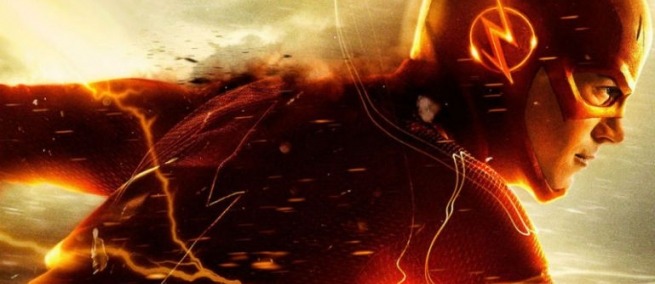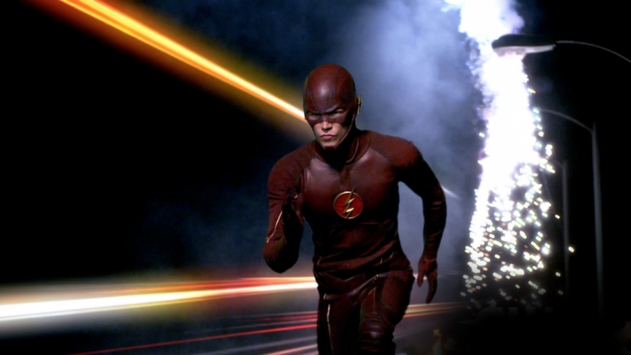
Barry Allen is The Flash. He first appeared in comic books in 1956. He died in the comic world in 1985, but is now the star of a television series on the CW called THE FLASH, starring Grant Gustin. SCIENCE GOES TO THE MOVIES co-hosts Dr. Heather Berlin and Faith Salie discuss the television series with theoretical particle physicist David E. Kaplan. Kaplan was a producer and star of the Sloan-supported documentary PARTICLE FEVER, about the discovery of the Higgs Boson.
As his name implies, The Flash is fast. How does speed affect time? “Barry Allen is running very fast so in special relativity he goes into a different reference frame,” begins Kaplan excitedly, with a smile. “When he is in that reference frame, if somebody could actually see his watch as he was running that fast, they would notice that his watch is running slower than their own watch. It is because time itself turns out to be relative. There is a simple reason for that, but then it has deep implications.

“The simple reason is that the laws of physics seem to be the same whether you’re standing still or moving at a constant velocity, that’s one form of relatively. So, if you’re in a spaceship, the spaceship is moving at a constant velocity, not accelerating, and everything you do is exactly the same, the laws are the same. If you’re in a train and it’s moving at a constant velocity, you can bounce a ball on the ground, you don’t have to keep track of the velocity of the train. That’s one rule.
“The second rule is that there is one special law of physics, which is that the speed of light is the same for every observer in an inertial frame. So, whether you’re on a train and the train is moving at a constant speed or in a spaceship or just sitting still, when you turn on a flashlight and measure the speed of light you say, okay light is moving that speed, and that’s true about the person on the train, the person on the spaceship, and The Flash. So now, you say okay go. And The Flash starts running and you turn on the flashlight and the light goes faster than The Flash, because nothing can go faster than light. So, The Flash is trying to catch up to the light beam and the light beam is going the speed of light, and I’m watching and I’m like, okay The Flash is keeping up pretty good but can’t actually catch it. But, The Flash is looking at the beam of light and you’d think, well The Flash sees the beam of light going much slower, because he’s almost able to keep up with it. But that can’t be true, because that violates a law of physics. So for The Flash, that beam of light must be going the speed of light. But if it’s going slower, how is that possible? It’s because time is going slower. The Flash sees time at a different rate than we do. And so as that beam of light goes he says yeah, it’s going the speed of light, no way I can catch that thing, it will always go the speed of light but that means time is not going at a fundamental rate for him and us, it has to be different.” This is an explanation of Albert Einstein’s special theory of relativity.
For a demonstration of special relativity, watch Marilyn Monroe prove it to Albert Einstein in Nicolas Roeg’s 1985 film INSIGNIFICANCE:
SCIENCE GOES TO THE MOVIES is written and produced by Lisa Beth Kovetz. It is broadcast once a month on PBS and made possible with a grant from the Alfred P. Sloan Foundation. Science & Film has previously covered episodes of the series, such as one on Doctor Who.
PARTNERS
TOPICS